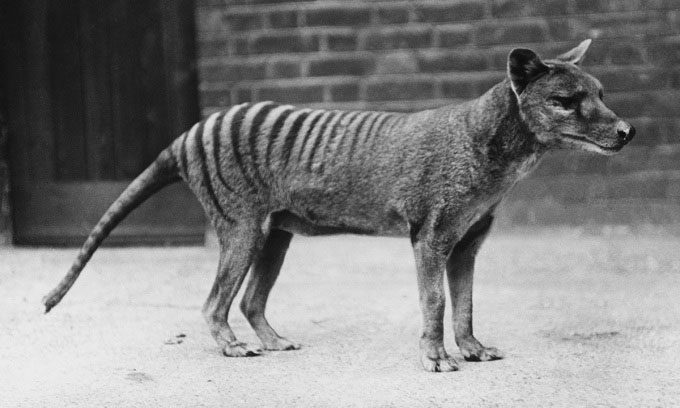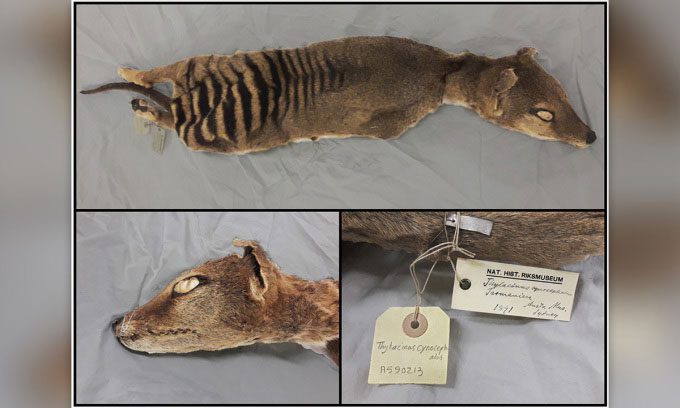Scientists Successfully Extract RNA from the Tasmanian Tiger, a Carnivorous Marsupial Extinct for Nearly a Century.
Similar to DNA, RNA (ribonucleic acid) carries genetic information. However, unlike DNA, which has a double-stranded structure, RNA consists of a single strand. This makes RNA more prone to degradation over time and challenging to extract from long-dead tissues.

A Tasmanian Tiger (Thylacinus cynocephalus) in captivity around 1930. (Photo: Popperfoto/Getty).
However, understanding RNA is crucial for gaining insights into the biological characteristics of animals, according to Emilio Mármol Sánchez, a researcher at the Paleobiology Center of Stockholm University and the Swedish Museum of Natural History. He is the author of a new study on RNA extraction from the Tasmanian Tiger, published in the journal Genome Research on September 19.
RNA serves as an intermediary that helps convert DNA blueprints into proteins that constitute cells, while also regulating cellular metabolic processes. Mármol Sánchez noted that RNA provides information on how cells function when they are alive.
The study of RNA is particularly fascinating with the Tasmanian Tiger (Thylacinus cynocephalus), a carnivorous marsupial that lived in Australia. Approximately 3,000 years ago, the mainland population went extinct, leaving only a small group on Tasmania. However, they also became extinct on the island due to human hunting, with the last known individual recorded to have died in a zoo in Hobart in 1936. Despite being a marsupial, the Tasmanian Tiger closely resembled a dog. This is a case of convergent evolution, where two separate lineages produce a creature with many similar traits.

Tasmanian Tiger specimen at the Swedish Museum of Natural History in Stockholm. (Photo: Emilio Mármol Sánchez/Panagiotis Kalogeropoulos).
Mármol Sánchez and his colleagues extracted RNA from a Tasmanian Tiger specimen that died approximately 130 years ago, analyzing both skin and muscle tissues. Using the RNA sequences obtained, the team could fill in some gaps in the Tasmanian Tiger’s DNA. This is possible because RNA is transcribed from DNA, allowing DNA sequences to be inferred from RNA.
The results of this new study can now be used to compare species and evolutionary timelines. In the future, the research team plans to continue sequencing RNA from other tissues of the Tasmanian Tiger, including preserved organs. Mármol Sánchez mentioned that similar techniques could be used to study other extinct animals and even ancient viruses, many of which are formed from RNA rather than DNA.
The research team hopes to find older RNA samples from extinct animals. Mármol Sánchez stated that woolly mammoths disappeared about 4,000 years ago, but they are working to extract DNA from specimens that are up to 50,000 years old.


















































